After the Garden - Storing Home Grown Food
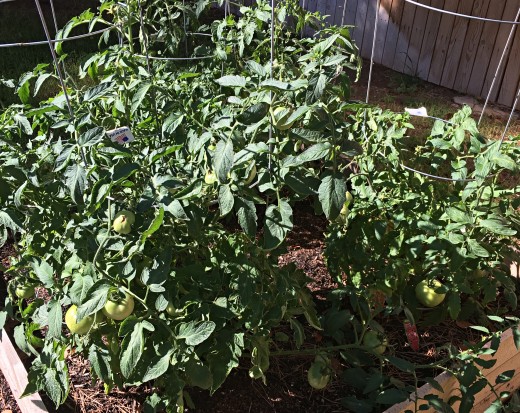
Gardening is one of life's small joys for me. Not only do you get to spend time outdoors, but you also get to watch the seeds you planted grow into scrumptious foods to eat. There is no comparison between fresh and store-bought produce. Even the colors of the vegetables are brighter when they come from the garden. I love to use heirloom seeds when I can but as long as I am growing it myself, I know it will be better. The only problem is, there is usually a lot more to harvest than my family can eat. That is why it is important to learn how to properly store your foods away for later use.
Save it - Don't Throw it!
The last thing you want to do after tending to your garden is to have to throw away much of the food you have grown. Many people find themselves in this situation. Suddenly, they find themselves overwhelmed with baskets of tomatoes, zucchini or green beans. Sometimes people leave what they cannot use in the garden to rot or end up tossing away much of the food they have grown. It is such a waste. Sure, you can give it away to friends and family, but why not put it up for your own later use?
Broccoli - Use the whole plant!
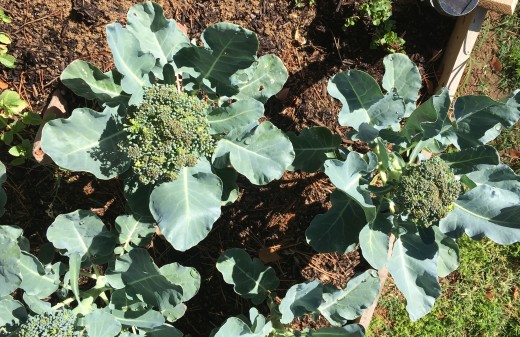
With few exceptions, vegetables, fruits, berries, and tubers can all be saved for later use. For instance, broccoli is very versatile because you can use the whole plant. Take the leaves and use them in a stir-fry, salad, or boil to eat like spinach. To save them you can boil them down and freeze them in a freezer bag. The broccoli heads can be blanched and frozen as well.
Blanching and Freezing
Many foods can be blanched and frozen. Blanching helps stop the decay that can discolor the food and help it retain its flavor. To blanch you can either partially steam your vegetables or dip them in boiling water for a minute or more than freeze. You can find instructions on how to steam and blanch and specific times for various vegetables on the National Center for Food Home Preservation page. Blanching is a quick and easy way to save for future meals.
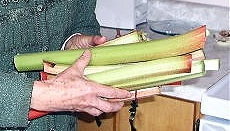
When Freezing food items such as rhubarb or celery you want to first clean them well under cold water. Then cut each stalk into 1-inch segments, lay out on a parchment covered cookie sheet and freeze for a few hours. Then remove and place into plastic bags. It will keep for at least a year. It is still safe after that but will have lost some of its flavor. If using for baking make sure to defrost first for accurate measuring as the pieces will shrink a little after defrosting. Remember that freezing changes the structure and items will defrost soft and not crunchy.
Freezer Jams
I am a fan of freezer jam because it is quick and easy. But it is not for putting away a lot of jam for a long time. If using this method plan on using it all up within a year even if it often says 6 months. I have found it is still good for a year. Allrecipes has a nice strawberry freezer jam recipe that uses pectin. I have made freezer jam for years and like to use Ball Real Fruit Pectin which is available at most markets. It comes in both a spoon out container or in simple one use packets for smaller harvests. I have made strawberry, peach, and blackberry jam using this product and it turns out very well. I do tend to use a little less sugar than called for but that is purely up to your own tastes. Make sure you use clean jars. I run them through the dishwasher and have been known to use old sauce jars and such as well as canning jars. I also recommend putting dates on the lids if you will be putting up more than one kind at various times.
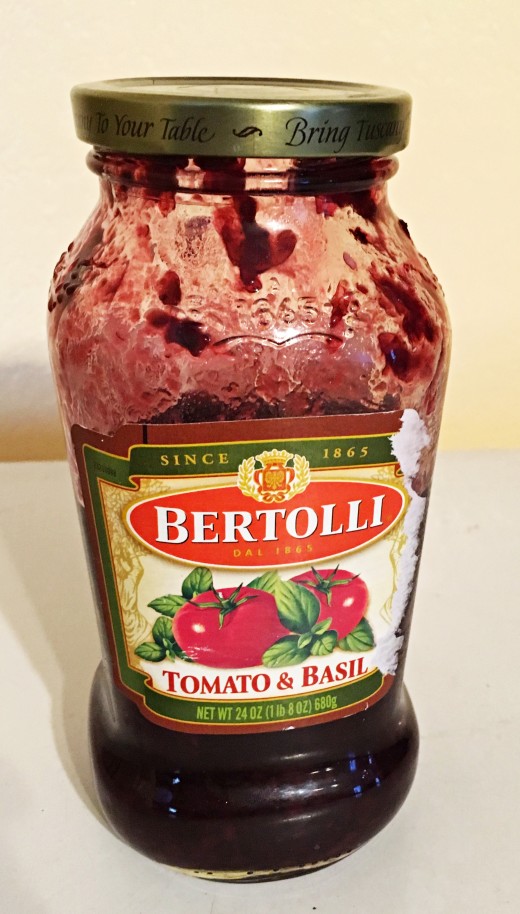
Canning
Canning is another option that allows you to put away food for a much longer time. I will cover some basics here but will not go too deeply on how to do it as each food may have different times and instructions. Today there are many choices when selecting a canning pot. There is the standard water bath type like this Granite Ware Covered Canner with a rack that I use. Or there are several electric versions. I cannot speak to the electric versions as I have not used them, but I really like the one I have. The wire rack holds the jars securely and it has two handles for ease in loading and unloading the jars from the pot. It is easy to use, just lower the sealed jars into the pot and make sure the water is covering the top of the jars. Then boil for the specified amount of time and remove the jars.
Jars for canning should be specific to that use. Canning jars have thicker glass than some other glass containers. Most canning jars come with open rings and lids. You will need to purchase more lids separately if reusing the old jars. These lids have a rubber seal that ensures you a tight fit when used properly. When you remove the jars from the water and let them sit a bit you should begin to hear a popping sound. This is the jars sealing themselves. If after a good cooling time a jar's lid is still not sealed you can re-immerse it in the hot water bath. You can check this by pushing in the middle of the lid with your finger. If there is any give, it is not sealed.
Pectin, Jars and Lids for Jam
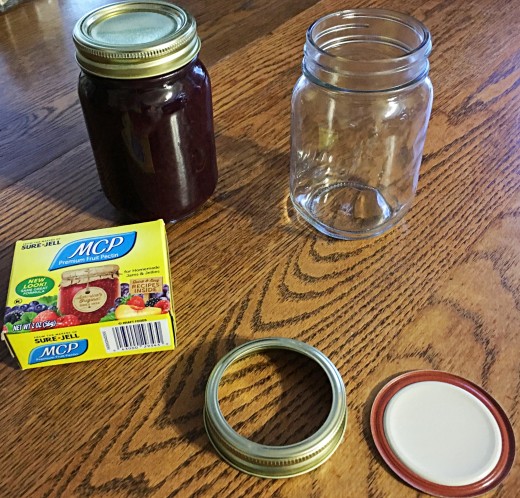
Cautions
There are many recipes for canning. Be careful to follow any canning recipes you get because failures can have some bad consequences. When I first started, I canned tomatoes and green beans. The tomatoes were great! Even the ones I added onions and spices to for later making sauces.
The green beans, however, were a bust. They all sealed well enough at first but I had not cooked them long enough. This caused a problem and they started to ferment. I had stored them in our cellar and one by one the seals popped. Let me tell you spoiled green beans are one of the worst smells you will find. I am not telling you this to scare you away but to make sure you are careful to watch boiling times and to make sure the jars are completely covered during the canning process.
Dehydrating
This is one of my favorite ways to store up extra fruit. Recently I had too many strawberries to eat so I decided to dehydrate them. I love to nibble on dried fruit when I want something sweet but a piece of fruit would be just too messy. Like when you are on a road trip. I just throw a baggy full of them into my purse and I am off.
I dehydrate berries, bananas, peaches, pears, grapes, and apples. Although I haven't tried it yet I also want to start making fruit roll-ups. I also want to start dehydrating vegetables like carrots, potatoes, celery, etc. for soups.
Dehydrating times vary by the kind of fruit and how thickly the pieces are cut. Times can also vary by how dry you want the fruit. Some like them tender and chewy. I prefer them hard and crunchy so always extend the time. Fruit will always be a little crispier after cooling as well so make sure to take that into account. Very dried fruit like I like it also shrinks a lot! Five full trays of strawberries will shrink down to fit into one sandwich bag.
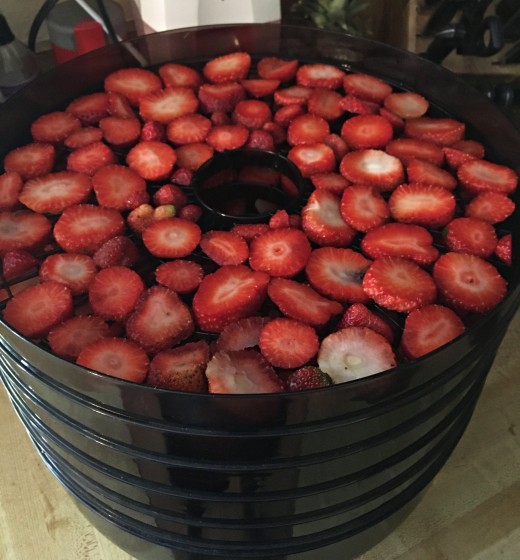
Ways to Dehydrate
I have an old Ronco dehydrator I have had for years and it works just fine for me but it has one heating coil and no adjustments. I rotate the trays as called for to get an even heat over the trays. There are however a plethora of choices when it comes to dehydrators. Some have pull-out trays, some stackable and most have adjustable temperature controls. Just type dehydrator into your search engine and you will see what I mean.
Oven and Sun Dehydrating
Another option is oven dehydrating. In an article called, "How to Dehydrate Food with an Oven for Backpacking" at the Livestrong.com website they give you all the tips you need.
You can find some really cool sun dehydrators as well. Great for the summer so you do not have to heat up the kitchen. I live in the desert and really need to get one of these.
If you do not want to buy a dehydrator then check out this article for some do it yourself outdoor dehydrating instructions.How to Sun-dry Foods Yourself: Three Methods!
Tips
1) A deep freeze is preferred over a conventional freezer, but if you do not have on try to keep your frozen vegetables away from the walls of the freezer. The defrosting mechanism will also partially defrost your put up foods and then refreeze them which could lead to freezer burn.
2) Clean is the key to canning or freezing. Wash your fruits and vegetables, wash the work area, boil your jars or run them through the dishwasher, and make sure to use clean lids.
This content is accurate and true to the best of the author’s knowledge and is not meant to substitute for formal and individualized advice from a qualified professional.
© 2018 Lorelei Nettles








